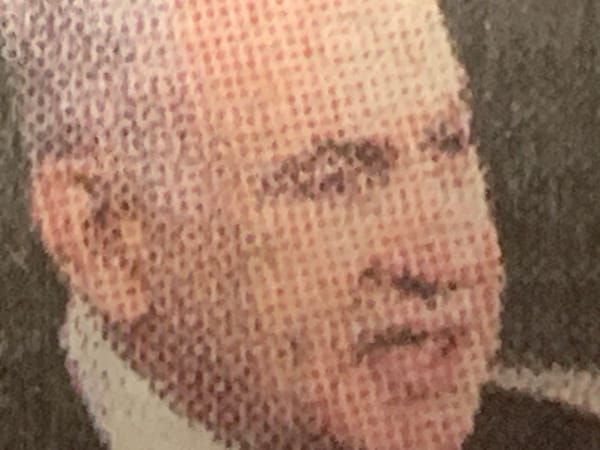Indignity Vol. 2, No. 4: Covid on the brain.
PUBLIC HEALTH DEP'T.

Opening Up the Case Against Shutting Schools
This piece also appears in the Washington Post.
AT THE END of his second day of classes in 2022, our teenage son settled in with a laptop in his New York public high school building, to take music lessons over Zoom for two hours. One of his teachers had tested positive for the coronavirus, while the other was isolating to avoid catching the virus before traveling.
How should the schools, and the country, respond to the runaway outbreak of the omicron variant? As the holiday break ended and the case numbers climbed, opinion pages and social media were full of people furiously declaring that schools must not be allowed to close again. In-person instruction was a moral necessity, they said; for too long, policy makers had ignored the damage done by remote education. The elections pundit Nate Silver, veering out of his lane of expertise in multiple directions at once, tweeted that the previous program of school closures had been more harmful than the invasion of Iraq.
The intensity and certainty was bizarrely at odds with what was happening in schools. No one with any influence was clamoring for long-term shutdowns. Some systems were briefly extending the break, to get their testing programs and other measures ready for the surge; some teachers unions were asking for similar pauses; many systems—like ours—were muddling along. The day after our teenager's Zoom session, the high school had a student concert scheduled for last period, but so many performers were absent the administration just dismissed students early. My son went and hung out in Central Park.
What are the people denouncing school closures really talking about? The writer Jay Caspian Kang has described a dynamic he calls "binary consensus building," in which, under the prevailing terms of argument, "a field of possibilities gets narrowed down to two polar, bad options." Around schools and omicron, there's clearly that kind of polarization—roughly: "You don't care that school closures harm kids" vs. "You don't care if kids die of the virus"—but the whole dispute is lopsided and out of date.
The pandemic keeps changing, while the talking points stay frozen in the spring of 2021. The Atlantic and Politico, within days of each other, ran roughly identical and widely read articles in which the writers declared that, as mothers, they were feeling "betrayed by Democrats" (Politico) and angered by the "widespread refusal among rank-and-file Democrats to seriously wrestle with the costs of pandemic-mitigation efforts" (the Atlantic). Meanwhile, in reality, Democrats are sending their children off to school and collecting exposure notices. The Chicago Teachers Union, cast as the biggest threat to in-person education, is returning to work after being locked out by the city's Democratic mayor, having negotiated some new safety measures.
Some of this insistence on refighting last year's shutdown fights is plain cynicism. Republicans are looking for an issue they can use against Democrats, and business-friendly Democrats are looking for an issue they can use against teachers' unions. A country that has consistently tolerated racial or economic disparities in education is suddenly expressing outrage about how remote teaching disproportionately hurts poor and nonwhite children.
But a lot of the vocal, affluent, healthy people seem to be driven by sincere feeling. Before the arrival of vaccines, parents in the American professional class were spending the pandemic in a state of daily, intense psychological conflict. In the foreground were, on the one hand, the terror that they or their families could be killed by the virus, and on the other, the frustration that they couldn’t get the kids out of the house for seven hours so they could do some work. The latter was bound up in additional fears about justifying their paychecks, as they patched together partial workdays, and in guilt about resenting their children.
In the middle ground and background, they were aware of other distressing facts and tensions: that as professional-class workers they were insulated from the worst dangers of the pandemic; that in fact their insulation was made possible by dumping those dangers off onto the poorer people who had to go to work to keep them supplied with food and deliveries; that remote education was more harmful to other people's children than their own; that despite their individual advantages they were politically impotent to stop red-state yahoos from renouncing public-safety measures and worsening the pandemic, or even to get blue-state technocrats to supply adequate masks and testing, or even to get their local governments to keep bars closed so the schools could be open—
Against all this, there was an ever-growing counter-message, from writers like the economist Emily Oster, telling them their fears were overblown. The disease appeared to be less severe in children. Schools weren't serious transmission sites. It was okay, necessary even, to take some risks. Some of these points, like children faring better with the coronavirus, were true; some, like how the disease spread in schools, were debatable.
As vaccines spread and took effect, the practical facts began to fit the point of view. By fall of 2021, even though pediatric vaccines had slipped a month behind schedule, opening schools made sense. Remote learning was suspended. This engaged and opinionated class of people gradually or suddenly adjusted to the realization that they and their schoolchildren, personally, were almost certainly not going to die of covid. The great weight around which all their choices and rationalizations had been structured was gone. They could get the kids out of the house and move on.
Omicron seemed to threaten to reverse all of this. Yet the coverage of the fast-spreading variant emphasized that it appeared to be less serious than the previous delta. Vaccinated people—which could be nearly anyone over 5, if they wanted it—were staying out of the hospital. Why should people have to put up with Zoom class over this? If the pandemic was a problem, it was someone else's problem.
This is not the sort of attitude one wants to think about oneself having, even internally, let alone in public. So the question of how school closings hurt other people's kids has emerged as a righteous conversation-ender. What could be more selfless, a better appeal to good liberal values, than protecting less fortunate children? And if opposing closures is selfless and principled, then the teachers or students suggesting it might be time to close some schools must be selfish and unprincipled.
But saying we should keep things normal doesn't mean things are normal. The idea that omicron is mild, and therefore can be safely ignored, is wishful thinking at best. Omicron is apparently not as bad as delta, but delta was much worse than the earlier varieties, which leaves omicron danger to the unvaccinated somewhere around the original coronavirus baseline. For parents of kids too young for vaccination, or for exhausted hospital workers, or for the millions of people whose medical histories make them more susceptible to the ravages of the virus, or for the rest of us collecting close-contact notices for our kids and seeing the streets empty out again, the pandemic isn't something to opt out of. It's something to keep trying to mitigate—with better masks, with regular testing, and, if those aren't available, possibly with taking a break until they are. Wishful absolutes won't get us through it, but helpful adjustments might.

VISUAL CONSCIOUSNESS DEP’T.
Snow

More consciousness on Instagram.





